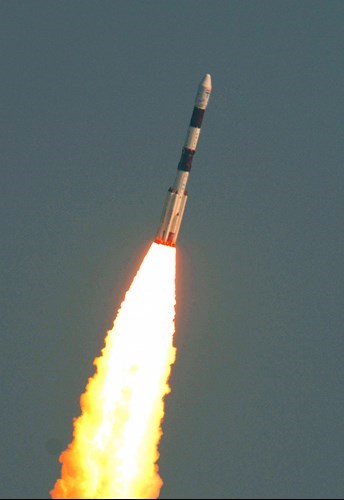15_02_17
1 Night; 2 Rockets; 106 Satellites (89 insured by ASIC)!
A new record for the most number of satellites launched on a single rocket was set in the early hours of the 15th February, 2017; 104 satellites on a single launch.
This number far surpasses the previous record of 33 satellites launched on a Dnepr vehicle in June, 2014, and illustrates the proliferation of cubesats being adopted for commercial missions. Cubesats are very small satellites, typically weighing just 1 – 3 kg.
At 03:58 GMT an Indian Polar Satellite Launch Vehicle (PSLV) lifted off from Sriharikota on the eastern coast of India. On board were a total of 104 satellites for institutions and companies in India, the US, Israel, the Netherlands, Switzerland, the UAE and Kazakhstan. This was the 39th launch of the PSLV and the 35th consecutive success.
The main payload was Cartosat 2D, an Earth observation satellite built by the Indian Space Research Organisation (ISRO). Weighing 714 kg, Cartosat 2D is the fifth satellite in the series and will be used to continue the monitoring of urban planning, rural development, coastline erosion and water usage as well as, as its name suggests, cartography. Alongside Cartosat 2D, ISRO also launched two 10kg satellites, INS 1a and 1b which will be used as technology demonstration missions and which carry a simple space weather monitor.
To make full use of the PSLV’s lift capability, the surplus capacity was sold to a number of cubesat operators. In total 101 cubesats, housed in cubesat dispensers, were mounted on the vehicle. Once on orbit, the dispenser doors were opened in sequence and the 101 cubesats pushed out by springs to separate them from the launch vehicle and each other. Three of the satellites were built by students from universities in Israel, the UAE and Kazakhstan and will give the students hands on experience of building and operating satellites. Of the other cubesats, PEASSS was a scientific satellite built by a consortium of Dutch research institutes; DIDO 1 was built by SpacePharma and will conduct microgravity research; 8 Lemur satellites for Spire Global will be used to measure temperature and humidity profiles in the atmosphere and 88 Dove satellites for Planet will be used to image the Earth’s surface. The 88 Dove satellites were insured for the launch phase of the mission.
The Dove satellites are built and operated by Planet of San Francisco. Prior to last night’s launch, Planet had already launched over a hundred satellites, 56 of which were still operational in orbit. The additional 88 satellites, once commissioned will allow Planet to achieve their aim of being able to image the entire surface of the Earth every day, providing for the first time, the ability to watch the planet evolve on a daily basis. Until now imaging satellites had a revisit time of 8 – 15 days. With daily images available new applications for natural disaster monitoring, humanitarian crises and agriculture are expected to develop.
The PSLV launch was not the only launch of last night. Earlier in the evening, at 21:39 GMT on the 14th February, the first Ariane 5 of the year lifted off from Kourou in French Guiana. On board the Ariane 5 were two large geostationary communication satellites: Intelsat-32e and Telkom 3S.
Intelsat-32e, also known as Sky Brazil 1, will be used to provide satellite television services to South America, and in particular Brazil. The satellite weighed 6,000kg at launch and is expected to provide communication services for a minimum of 15 years. Also atop the Ariane 5 was the smaller (3,500kg) Telkom 3S satellite for Telkom Indonesia. Telkom 3S will provide satellite television and other communication services across South East Asia, Malaysia and the 18,000 islands that make up the Indonesian archipelago. Of the two satellites on the Ariane 5 launch, ASIC insured Intelsat 32e.
ASIC’s next insured launch, Echostar 23, is scheduled for no earlier than 28th February 2017.
Further information:
- Ariane: www.arianespace.com/mission/ariane-flight-va235/
- PSLV: www.isro.gov.in/launchers/pslv
- Planet: www.planet.com/pulse
- Intelsat: www.intelsat.com/news-media

Photo credit: ISRO

